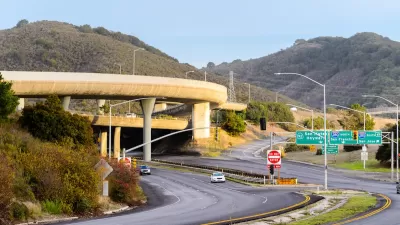As ‘robotaxis’ and other autonomous vehicles make their way onto American streets, cities can take proactive steps to mitigate risks and balance the benefits and challenges of new technology.

In an opinion piece in Governing, Hye Min Park and Fabian E. Villalobos describe a decision-making process utilized in industries such as water and energy that could simplify the complex process of regulating autonomous vehicles. “How can the sometimes-conflicting interests of all stakeholders be considered and balanced?”
The process, known as “decision-making under deep uncertainty” or DMDU, “focuses on actions that can be agreed upon, even if multiple stakeholders agree on little else. For instance, instead of speculating about what does or doesn’t make robotaxis unsafe, DMDU could help regulators and AV companies figure out which warning signs to monitor.” Other methods include measuring proxies for risk when better data is not available, such as “how rapidly the technology is adopted, whether an agency has the ability to manage the risk, or the size of the potentially affected population.”
According to the authors, “Cities and regulatory agencies can often feel that they’re left as bystanders when new technology is rolled out, yet they are responsible for the safety of whatever private entities develop and deploy.” This approach can help them proactively assess and mitigate risks as new technologies are introduced.
FULL STORY: Reining in the Risks of Robotaxis

Alabama: Trump Terminates Settlements for Black Communities Harmed By Raw Sewage
Trump deemed the landmark civil rights agreement “illegal DEI and environmental justice policy.”

Planetizen Federal Action Tracker
A weekly monitor of how Trump’s orders and actions are impacting planners and planning in America.

Why Should We Subsidize Public Transportation?
Many public transit agencies face financial stress due to rising costs, declining fare revenue, and declining subsidies. Transit advocates must provide a strong business case for increasing public transit funding.

Understanding Road Diets
An explainer from Momentum highlights the advantages of reducing vehicle lanes in favor of more bike, transit, and pedestrian infrastructure.

New California Law Regulates Warehouse Pollution
A new law tightens building and emissions regulations for large distribution warehouses to mitigate air pollution and traffic in surrounding communities.

Phoenix Announces Opening Date for Light Rail Extension
The South Central extension will connect South Phoenix to downtown and other major hubs starting on June 7.
Urban Design for Planners 1: Software Tools
This six-course series explores essential urban design concepts using open source software and equips planners with the tools they need to participate fully in the urban design process.
Planning for Universal Design
Learn the tools for implementing Universal Design in planning regulations.
Caltrans
Smith Gee Studio
Institute for Housing and Urban Development Studies (IHS)
City of Grandview
Harvard GSD Executive Education
Toledo-Lucas County Plan Commissions
Salt Lake City
NYU Wagner Graduate School of Public Service





























